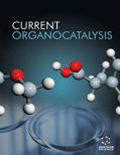
Full text loading...

Ulvan, a sulfated polysaccharide derived from the green seaweed Ulva lactuca, is widely used in different industrial applications. However, achieving a high yield of ulvan requires an efficient extraction method. Mechanochemical-assisted extraction (MCAE) is an eco-friendly and effective technique commonly used for extracting natural products, including polysaccharides.
This study aims to extract ulvan using the MCAE method and optimizes the extraction conditions using the Box-Behnken design (BBD) of Response Surface Methodology (RSM).
The extraction parameters optimized included solid reagent concentration, milling time, solid/liquid ratio, extraction time, and temperature. Analysis of variance (ANOVA) was applied to assess the statistical significance of the model. Fourier transform infrared (FTIR) spectroscopy was performed to confirm the structural features of the extracted ulvan. Scanning electron microscopy (SEM) analysis revealed the morphological changes in Ulva lactuca before and after mechanochemical treatment.
The optimized extraction conditions were 36.33% solid reagent (Na2CO3), 29.75 minutes of milling time, a solid/liquid ratio of 1:24.98 (g/ml), an extraction time of 140.5 minutes, and a temperature of 80°C. Under these conditions, the extraction yield of crude ulvan was 29.28% ± 0.003, significantly higher than the yield obtained using the conventional acidic-hot water method (10.31% ± 0.16%). The statistical model was highly significant (p < 0.0001) with a high regression coefficient (R2 = 0.9811).
The MCAE method proved to be a highly efficient and sustainable approach for extracting ulvan from Ulva lactuca, offering a significantly increasing yield and reducing extraction time compared to traditional methods.

Article metrics loading...

Full text loading...
References


Data & Media loading...